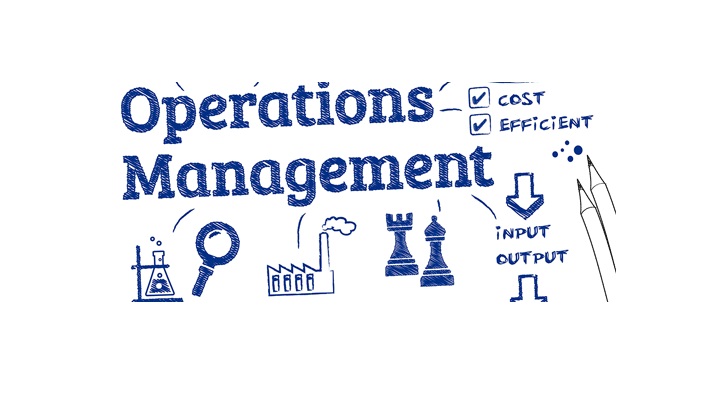
Implementing AI in Your Operations Strategy
As the business landscape becomes increasingly competitive, organizations are turning to innovative technologies to enhance efficiency and drive growth. AI in operations management is at the forefront of this transformation, providing companies with the tools they need to optimize processes, improve decision-making, and enhance customer experiences. This article discusses how to effectively implement AI into your operations strategy, ensuring a successful transition that maximizes the benefits of artificial intelligence.
Understanding AI in Operations Management
AI in operations management refers to the integration of artificial intelligence technologies into business processes to improve efficiency and effectiveness. This can include the use of machine learning, natural language processing, robotics, and data analytics to automate tasks, analyze data, and provide actionable insights. By leveraging AI, organizations can streamline workflows, reduce costs, and enhance overall operational performance.
1. Defining Your Objectives
Before implementing AI in your operations strategy, it’s essential to define clear objectives. Understanding what you want to achieve with AI will guide your implementation process and help you measure success. Common goals include:
- Improving Efficiency: Automating repetitive tasks to save time.
- Enhancing Decision-Making: Using data-driven insights to inform strategic decisions.
- Optimizing Resource Allocation: Ensuring resources are used effectively to maximize productivity.
Example:
A logistics company might aim to reduce delivery times by using AI to optimize route planning and inventory management.
2. Assessing Current Processes
To effectively integrate AI, it’s crucial to assess your current operations and identify processes that can benefit from automation and optimization. Conduct a thorough analysis of workflows to pinpoint bottlenecks and inefficiencies.
Key Areas to Evaluate:
- Repetitive Tasks: Identify tasks that are time-consuming and can be automated.
- Data Management: Evaluate how data is currently collected, analyzed, and utilized.
- Customer Interactions: Review customer service processes and identify areas for improvement.
3. Choosing the Right AI Tools
There are numerous AI tools available, each designed to address specific operational needs. Selecting the right tools is critical for successful implementation. Key considerations include:
- Scalability: Ensure the tool can grow with your business needs.
- Integration: Look for solutions that integrate seamlessly with existing systems.
- User-Friendliness: Choose tools that are intuitive and easy for your team to adopt.
Popular AI Tools:
- WorkForce Sync: Automates scheduling and quality control in workforce management.
- Asana: Enhances project management and team collaboration through automation.
- IBM Watson: Provides powerful analytics and insights for decision-making.
4. Developing a Comprehensive Strategy
Once you have defined your objectives and assessed your processes, it’s time to develop a comprehensive strategy for implementing AI. This strategy should outline the steps necessary for a successful integration, including timelines, resource allocation, and key performance indicators (KPIs) to measure success.
Components of a Successful Strategy:
- Pilot Programs: Start with small-scale pilot projects to test the effectiveness of AI solutions.
- Training and Support: Provide training for employees to ensure they understand how to use the new tools effectively.
- Feedback Mechanisms: Establish channels for employees to provide feedback on the AI tools and processes.
5. Engaging Stakeholders
Engaging stakeholders throughout the implementation process is crucial for success. This includes communicating the benefits of AI to employees, management, and other relevant parties. Address any concerns regarding job security and emphasize that AI is intended to enhance their roles, not replace them.
Strategies for Engagement:
- Workshops and Training Sessions: Offer opportunities for stakeholders to learn about AI and its benefits.
- Regular Updates: Keep everyone informed about the progress of the implementation and any changes to processes.
6. Testing and Iterating
Before fully deploying AI solutions, conduct thorough testing to ensure everything functions as intended. Pilot the AI tools in a controlled environment and gather feedback from users. This step allows you to identify any issues and make necessary adjustments before a full rollout.
Key Testing Areas:
- Functionality: Ensure the AI tools perform as expected and integrate well with existing systems.
- User Experience: Gather feedback to assess how easy the tools are to use.
- Performance Metrics: Monitor the impact of AI on operational efficiency and productivity.
7. Monitoring and Measuring Success
After implementing AI in your operations strategy, it’s crucial to monitor its performance and measure success against the established KPIs. Regularly review the impact of AI on productivity, employee satisfaction, and overall operational efficiency.
Metrics to Track:
- Time Savings: Measure the reduction in time spent on automated tasks.
- Error Rates: Track any decrease in errors resulting from automation.
- Employee Feedback: Gather insights on how AI has affected their work environment.
8. Continuous Improvement
AI implementation is not a one-time effort; it requires ongoing evaluation and improvement. As your business evolves, new opportunities for AI integration may arise. Regularly assess your processes and seek ways to enhance your AI strategy.
Steps for Continuous Improvement:
- Stay Updated: Keep abreast of new AI technologies and trends.
- Solicit Feedback: Regularly ask employees for their insights on the AI tools and processes.
- Iterate: Be willing to make adjustments based on feedback and performance metrics.
Conclusion
Implementing AI in operations management can significantly enhance efficiency and drive business success. By defining clear objectives, assessing current processes, and selecting the right tools, organizations can develop a comprehensive strategy that maximizes the benefits of AI. Engaging stakeholders, testing thoroughly, and continuously improving processes will ensure a successful transition into the AI-powered future of operations management.





